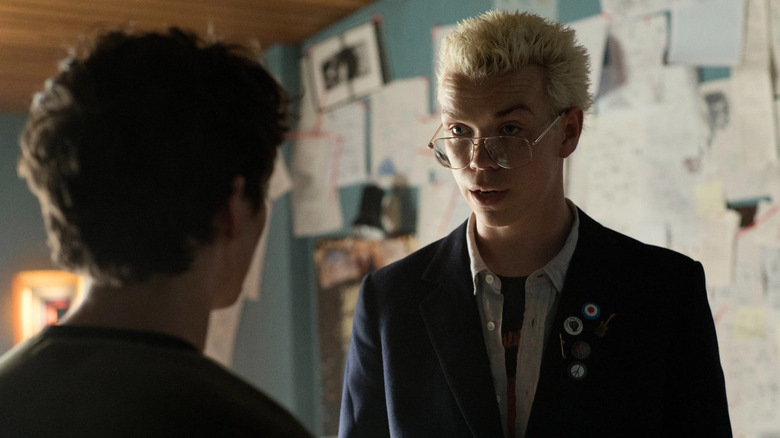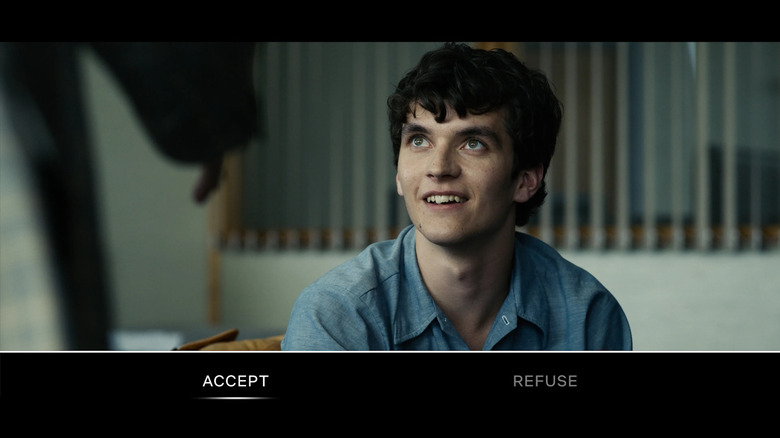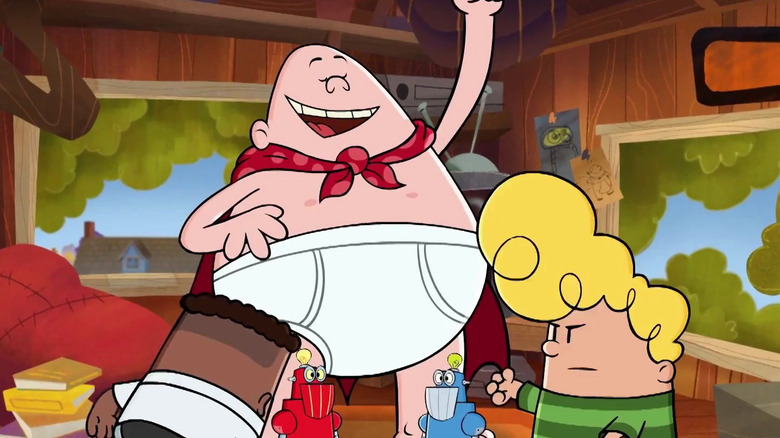In 2018, the writer Charlie Brooker and the director David Slade created A spin-off film “Black Mirror” entitled “Bandersnch”, “ which was to be a daring media experience. The intrigue of “bandersnatch” followed a young computer programmer named Stefan (Fionn Whitehead) in his quest to adapt one of his favorite novels of your choice of choice (also called “Bandersnatch”) in an open video game. We are in 1984, and these games are always considered a novelty. He teams up with Colin (Will Poulter), a game designer, and the two start to head the creative control and how the game should be the business. There are sub -intrigues on Stefan’s dead mother, and clues to the world to come according to what he says in therapy.
Advertisement
The gadget of “Bandersnch” is that the film itself is a story of choice. The film was released on Netflix, and viewers were encouraged to keep their remote controls ready, having to make history decisions for Stefan when they appear periodically on the screen. If Stefan accepts Colin’s offer to corporate his game, for example, this is considered the “bad” path, and the film will start again. There are also several endings, including a metal where Stefan realizes that he is in a film to choose your adventure on Netflix. On average, “Bandersnch” should take about 90 minutes to look at. In Toto, the various film segments last five hours and 12 minutes. Seeing each possible “bandersnatch” iteration would be a one -day business. When I watched it, I finished the meta.
Advertisement
“Bandersnch”, of course, requires certain types of home vision technologies to function properly; A story of choice with adventure would not work in a theater with a crowd. As such, it’s a new fascinating way to watch a film. Does interactivity help or harm a story?
And “Bandersnatch” was not the only time that Netflix experienced the structure “branched narrative”. They released many specials (mainly for children) under their special interactive banner. Unfortunately, according to A new AV club reportAll these specials are about to be deleted.
The strange and wild world of Netflix interactive specials
“Bandersnch” was not even the first interactive special of Netflix. The first came in 2017 as “Puss in Book”, a spin-off of the “Shrek” franchise. Netflix also reused video games choose 2015 “Minecraft: Story Mode” in an interactive 2018 film. Most of Netflix’s interactive specials were targeting children and included films like “Cat Burglar”, “We lost our human” and “Battle Kitty” (cats have died into these specials for any reason for any reason). Most interactive special offers were based on existing intellectual property and included “Barbie: Epic Road Trip”, “Johnny Test’s Ultimate Meatloaf Quest”, “Stretch Armstrong: The Breakout”, “Carmen Sandiego: To fly or not fly -” Wwe: “Captain” Jurassic World: “.
Advertisement
The interactive specials for adults included “bandersnatch”, but also an episode in 2020 of “The Unbreakable Kimmy Schmidt” Called “Kimmy against the Reverend”. There was also a series of interactive documentary specials with Bear Grylls, all under the banner “You vs. Wild”. The interactive special offers were numerous enough to ensure that it is a simple novelty, but a new flourishing narration medium. In a world of “second projection” and distracted from the observation of the film, interactive films seemed to be a good way to ensure that the public paid particular attention. Films and video games overlapping somewhat.
Netflix was ideally located for presenting interactive films and technology worked (most of the time). Unfortunately, all the films above will soon be deleted from the platform. According to Av Club Report, Netflix is undergoing massive overhaul and the new user interface technology will make interactive films impossible to navigate. And if they are not on Netflix, it will be difficult to recondition them. Maybe like a downloadable video game?
Advertisement
The story of interactive films
Netflix, underlines the article AV, probably only closes its interactive specials in favor of an already tracked video game market. Netflix currently produces around 120 interactive mobile phone games, all based on their properties. It seems that the sale of these games is more profitable for the company than to maintain its digital library of interactive films.
Advertisement
Netflix, of course, is hardly the first company to experiment with interactive feature films. The interactive pre-filmed driving simulators were brilliant with the return path in the 1950s, for example. In 1961, genius filmmaker William Castle had the idea of a “punishment survey” for his horror film “Sardonicus”. Just before the highlight of the film, public members would be encouraged to keep the “boost” or “boost” cards, voting if the villain should be punished or not. Of course, “Mr. Sardonicus” was not really interactive, because Castle never wrote or fired a “happy” end.
In the 1980s, with the advent of Laserdisc technology, interactive stories became easier to simulate at home. Many Laserdisc animated films have been published throughout the decade, mainly in Japan.
Advertisement
1995 saw the release of “Mr. Payback”, a 30 -minute short film that was to be shown in theaters. The members of the public received “voting” clicks and their votes would dictate how the titular protagonist (Billy Warlock) would punish the people who despised him. Bruce McGill, Christopher Lloyd and Leslie Easterbrook also appeared, while Ice-T and Paul Anka played themselves. Experience failed and no one cared about how technology worked.
There was also an interactive suite in “Wargames” in 2015 called “#Wargames”. This film used several screens, all operating simultaneously, and the story changed according to the screen on which the spectator zoomed. It worked fairly well, but remains a quirk.
Maybe the world is not ready for interactive films. But we can be assured that we will continue to experiment.








